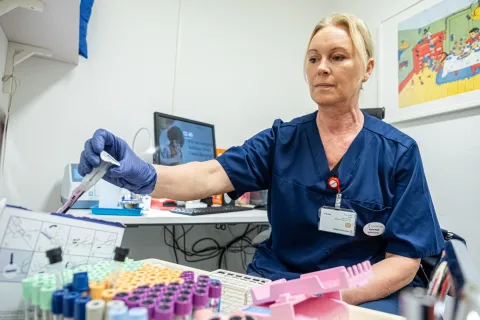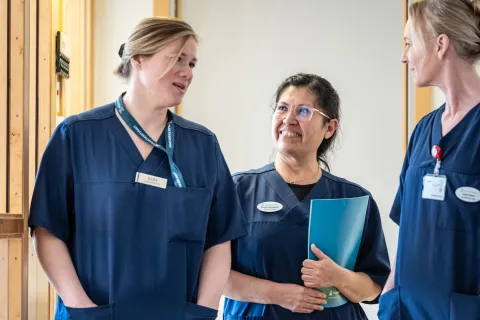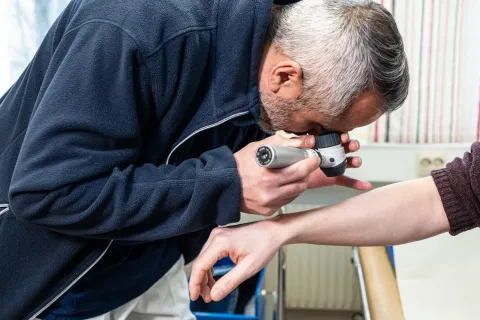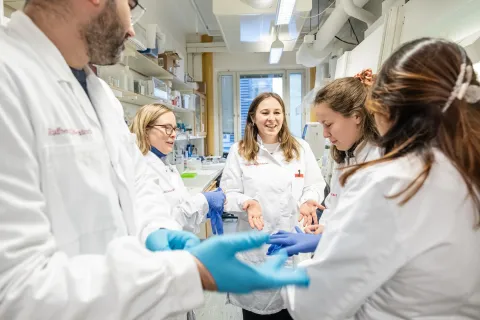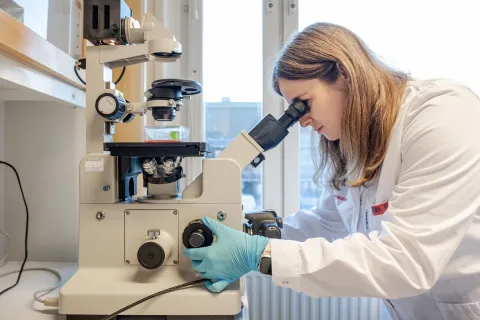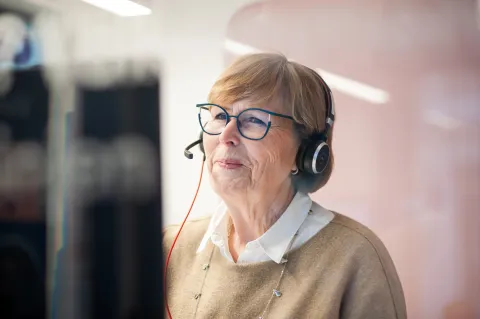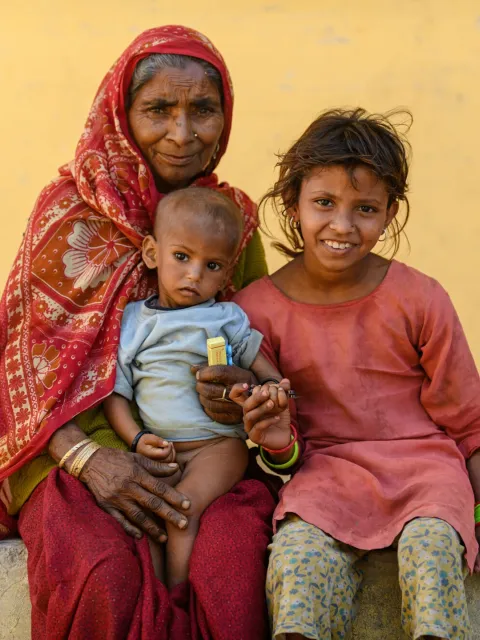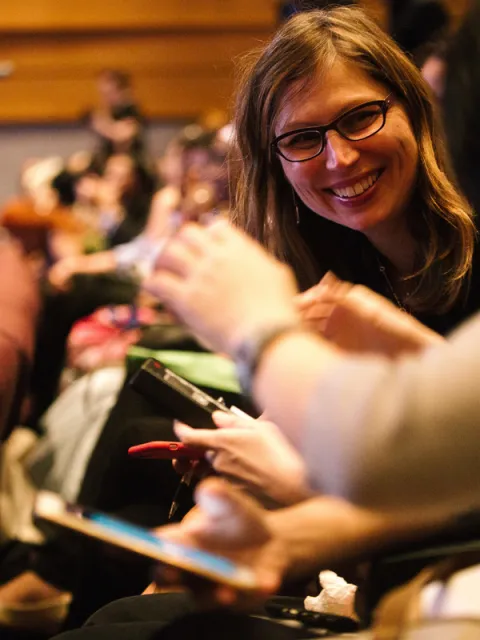Capturing cancer research and care in Sweden
UICC presents a new photo mission organised in collaboration with the Swedish Cancer Society (Cancerfonden), a member organisation. The mission documents the critical work underway in cancer research, early detection, and the support of people living with cancer across Sweden. Photos by Edis Potori.
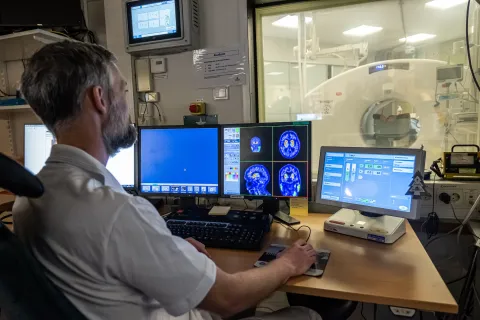
Photos by Edis Potori
The new photo mission organised by UICC with its member the Swedish Cancer Society (Cancerfonden) spotlights three key sites in Sweden’s cancer response: Uppsala University’s Department of Immunology, Genetics and Pathology; a primary healthcare centre; and Cancerlinjen, Cancerfonden’s national support helpline.
At Uppsala University, researchers are advancing targeted therapies with the support of Cancerfonden. Professor Marika Nestor leads a team exploring precision medicine using alpha particle-emitting radionuclides to treat cancer with high specificity and reduced side effects.
Among the researchers is Dr Sara Rinne, focused on developing targeted alpha therapies (TAT) for gastric cancer. “TAT is a type of radiotherapy where a molecule delivers a radioactive substance directly to cancer cells. It uses alpha particles, which cause complex damage that cancer cells struggle to repair, making the treatment very effective,” she explained. “In addition to that, I am also researching novel delivery strategies, particularly pretargeting, which delivers drugs in a two-step approach. This could minimise radiation exposure to healthy tissue while keeping the treatment's effectiveness high or even enhancing it.”
PhD student Amanda Gustafsson brings a personal dimension to the lab’s work, where her research focuses on targeted radionuclide therapy. “I lost someone close to me to aggressive stomach cancer, and that has left a deep mark on me. While, we have made significant progress in understanding cancer biology and developing diagnostic and therapeutic strategies, there is still so much we don’t know, and too many patients we can’t treat.”
Her work explores ways to enhance targeted radionuclide therapy, a treatment that uses radioactive isotopes linked to antibodies to deliver precise radiation to cancer cells while sparing healthy tissue. “With a radioactive isotope coupled to an antibody that recognises and binds to cancer cells, we get specific irradiation of tumours and metastases while sparing healthy tissue,” Ms Gustafsson explained. Her current projects investigate different strategies to improve this approach, helping to increase its effectiveness and potential for clinical use.
Also part of Professor Nestor’s research group is doctoral student Saloni Chopra, whose work focuses on synthetically produced small molecules designed to selectively target cancer cells. “In my current research project, I am studying synthetically produced small molecules that can be radiolabelled to specifically target and kill cancer cells,” she explained.
While driven by a long-standing passion for biology, her motivation lies in uncovering what remains unknown in cancer research and contributing to solutions for those affected. “Even though a lot is already known about cancers, they are still not fully understood—especially how different they are from each other. It makes the work even more interesting, but also very challenging.”
Primary healthcare and early detection
Outside the laboratory, the photo series captured the role of primary healthcare in early cancer detection. General practitioners and nurses are often the first to notice the symptoms that could point to cancer, which are often vague and hard to distinguish from other, statistically more likely, illnesses. The early detection of cancer means a greater chance of survival. It also increases the likelihood of a shorter, gentler and more effective treatment for the patient.
The photographer also visited Cancerlinjen, Cancerfonden’s helpline service, staffed by trained cancer information specialists and specialist oncology nurses. It offers support, information, and guidance to anyone affected by cancer. They answer questions confidentially and anonymously, while taking part in events to spread knowledge and offer free presentations and training for other support functions in civil society.
This latest photo shoot in Sweden continues UICC’s ‘Capturing Cancer’ initiative, portraying the people behind progress in cancer care and research, and their enduring commitment to making a difference.
“Cancer researchers are at the forefront of our mission to reduce the burden of disease on individuals and their families and caregivers. These images reveal the people behind the breakthroughs that lie just ahead. They are portraits of innovation, perseverance and dedication."
– UICC President and Secretary-General of the Swedish Cancer Society, Ulrika Årehed Kågström.
Cancer in Sweden and the Swedish Cancer Society
In 2022, Sweden faced 69,261 new cases and 25,569 deaths attributed to the disease. Among men, prostate cancer was the most common, followed by colorectal and melanoma cancers. For women, breast cancer topped the list, with colorectal and melanoma cancers also being prevalent.
Since its creation in 1951, the Swedish Cancer Society has contributed over SEK 16 billion (nearly EUR 1.5 billion) to cancer research across the country, thanks to a diversity of campaigns and collaborations that support their mission. In 2024, SEK 1 billion (EUR 92 million) was allocated for cancer research, funding 262 new research grants.
The organisation also provides valuable information and support to those affected by cancer, including people living with cancer and their families, and leads advocacy efforts at the highest level to improve cancer prevention, healthcare, and research policies.
Last update
Thursday 08 May 2025
